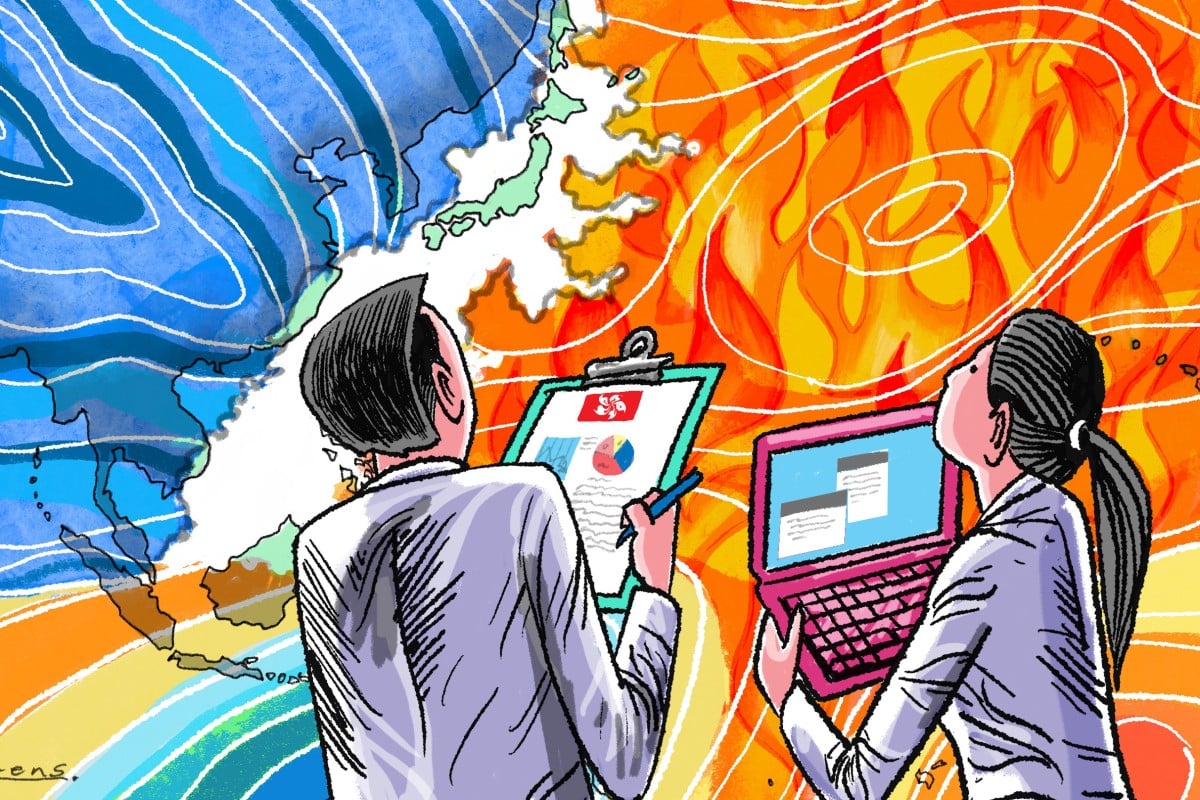
The deluge of record-breaking rainfall that submerged Beijing’s streets and the blazing wildfires that tore through the Hawaiian island of Maui might seem unrelated, but there exists an unexpected connection between these seemingly distant events.
Despite their apparent differences, these events have important similarities that can teach us valuable lessons as Hong Kong faces its own challenges from the often-unnoticed but dangerous climate crisis.
First, a common thread lies in the extreme weather patterns that triggered these disasters. In Beijing, weather stations registered an extraordinary amount of rainfall in a short period, resulting in almost a year’s worth of rain in just a matter of days. The city had already experienced extreme heat in early summer, and the effects of drought rendered the soil less absorbent and amplified the risk of severe flash flooding.
Similarly, a prolonged dry spell had plagued Maui, resulting in moderate to severe drought. The island relies on the La Nina climate pattern for essential winter rainfall but has not received the expected results, contributing to a 30-year trend of declining rainfall during the wet season.
Second, the significance of topography emerged as a common factor in both instances. In Beijing, the city’s susceptibility to flooding was influenced by its physical layout. Low-lying areas faced heightened risks as water naturally flowed into valleys, poorly drained basins and other urban depressions.
In Hawaii, the complex interplay of wind and terrain played a pivotal role in fuelling the wildfire. As wind cascaded over the mountains, the air dried out, becoming the ideal catalyst for igniting and spreading fires. Narrow canyons accelerated the wind, intensifying the spread of fires through hot embers.
The removal of natural habitat and urbanisation are also shared factors. In Beijing, urbanised regions faced a greater likelihood of flooding because of impermeable surfaces and inadequate drainage systems. The built environment exacerbated flooding during intense rainfall, making densely populated areas more susceptible to the ravages of water.
The alteration of Hawaii’s landscape over time, including building over wetlands and transforming native habitats, drastically changed the natural balance. Non-native grasses now cover a significant portion of the land while more than 90 per cent of Hawaii’s native dry forests have been eliminated, illustrating the loss of vital ecological systems.
Hong Kong faces similar challenges. We experience urbanisation and more extreme weather patterns, often with housing complexes located near mountains. As climate change is expected to bring more severe weather, it’s imperative for Hong Kong to invest in building resilient infrastructure to better prepare for these changes.
To strengthen Hong Kong’s climate adaptation and resilience, we must first mainstream nature-based solutions. Natural habitats such as wetlands can contribute to the absorption of floodwater.

Within urban areas, the incorporation of the sponge city concept and blue-green infrastructure that combines bodies of water and landscapes can fortify defences against flooding. These strategies can enhance climate resilience and public spaces, thereby improving overall liveability.
Hong Kong can draw inspiration from Shenzhen, its neighbour from across the bay which serves as a prime example of China’s “sponge city” programme. In a span of five years, Shenzhen has successfully completed 26 sponge city plans and 1,361 projects, covering a total of 276 sq km of urban area.
In Hong Kong, the Drainage Services Department has gained momentum in implementing nature-based solutions, as demonstrated by its efforts in revitalising the Tung Chung River and Jordan Valley Channel. To further this effort, the government must conduct a holistic environmental assessment to pinpoint sites suitable for implementing nature-based solutions.
It’s worth noting that safeguarding nature holds an additional benefit of mitigating climate change, given that nature operates as a carbon sink.
Second, strengthening the city’s ability to withstand extreme weather necessitates security risk assessments and formulating robust contingency plans. Hong Kong’s unique urban-wildland interface is prone to human-induced wildfires.
As climate change exacerbates this risk, the government should conduct research to understand the wildlife risk in Hong Kong, investigate the intricate links between climate patterns and wildfires, build future hill fire management strategies and establish a comprehensive centralised database on hill fires.
Third, the establishment of a collaborative disaster management centre across the Greater Bay Area presents a strategic approach as typhoons are not confined to Hong Kong but pose risks to the entire region. To address this shared challenge, establishing a joint regional disaster management centre is needed. By pooling resources, expertise and data, such a centre can enhance climate preparation and modelling, enabling more effective disaster response and mitigation strategies that benefit the entire region.
With Chief Executive John Lee Ka-chiu’s latest policy address approaching, his government must take this opportunity to incorporate these lessons and recommendations. To transform Hong Kong into a more liveable city, improve citizens’ lives and enhance the vibrancy of the city, we must take the climate crisis more seriously than ever.
Urgent action is needed now if we are to reach the goal of carbon neutrality by 2050 as targeted. By navigating the challenges presented by climate change, the city can turn them into an opportunity to build a more resilient and adaptable urban landscape for our future generations.